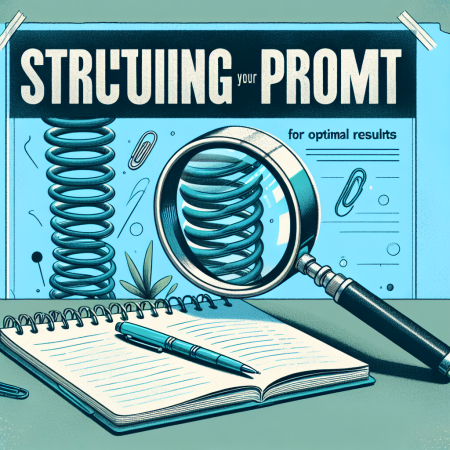The structure of your prompt plays a crucial role in the quality and effectiveness of the content generated by AI. A well-structured prompt guides the AI to produce content that is not only informative and engaging but also well-organized and easy to read. This article explores the importance of prompt structure and offers practical tips on how to break down your instructions into clear sections for optimal results.
The Importance of Structured Prompts
AI-generated content is only as good as the prompt it’s based on. When your prompt is structured clearly, it provides the AI with a roadmap for creating content that flows logically and covers all the necessary points. This leads to content that is cohesive, well-organized, and easy to follow, which is essential for both reader engagement and SEO.
How to Structure Your Prompt
To achieve the best results, consider dividing your prompt into the following key sections:
- Introduction:
- Purpose: Start by outlining the purpose of the content. What is the main topic? What do you want the reader to learn or take away from the content?
- Tone and Audience: Specify the tone of the content (e.g., formal, conversational) and the target audience (e.g., beginners, experts, general readers).
- Body:
- Key Points: Break down the main content into specific sections or key points that you want the AI to cover. This could include subtopics, arguments, examples, or data points.
- Structure: Specify if you want the content presented in a particular format, such as paragraphs, bullet points, or numbered lists. This helps in organizing the information in a reader-friendly way.
- Increased productivity
- Better work-life balance
- Cost savings for companies
- Use bullet points to highlight key statistics or case studies.”
- Conclusion:
- Summary: Instruct the AI to summarize the key points discussed and provide a closing statement or call to action (CTA).
- Next Steps: If applicable, suggest what the reader should do next, whether it’s contacting the company, reading related articles, or trying out a product.
- Specific Elements:
- Formatting: If you need specific elements like headings, subheadings, lists, or quotes, mention them explicitly in the prompt.
- SEO Considerations: If the content needs to be SEO-friendly, include instructions on where to place keywords, how often to use them, and any other SEO-related guidelines.
Benefits of a Well-Structured Prompt
- Cohesive Content: A clear structure helps the AI produce content that flows logically from one section to the next, making it easier for readers to follow and understand.
- Reader Engagement: Organized content is more engaging, as it allows readers to quickly grasp the main points and find the information they’re looking for.
- SEO Optimization: Structured content is often more SEO-friendly, as it’s easier to include and optimize keywords, headings, and other elements that search engines prioritize.
- Efficiency: A well-structured prompt reduces the need for revisions, as the AI is more likely to get it right the first time, saving you time and effort.
Conclusion
Structuring your prompt is a simple yet powerful way to enhance the quality of AI-generated content. By breaking down your instructions into clear sections—introduction, body, conclusion, and any specific elements—you can ensure that the content produced is well-organized, easy to read, and optimized for SEO. The next time you’re crafting a prompt, take the extra time to structure it properly—you’ll be rewarded with content that truly meets your needs.








